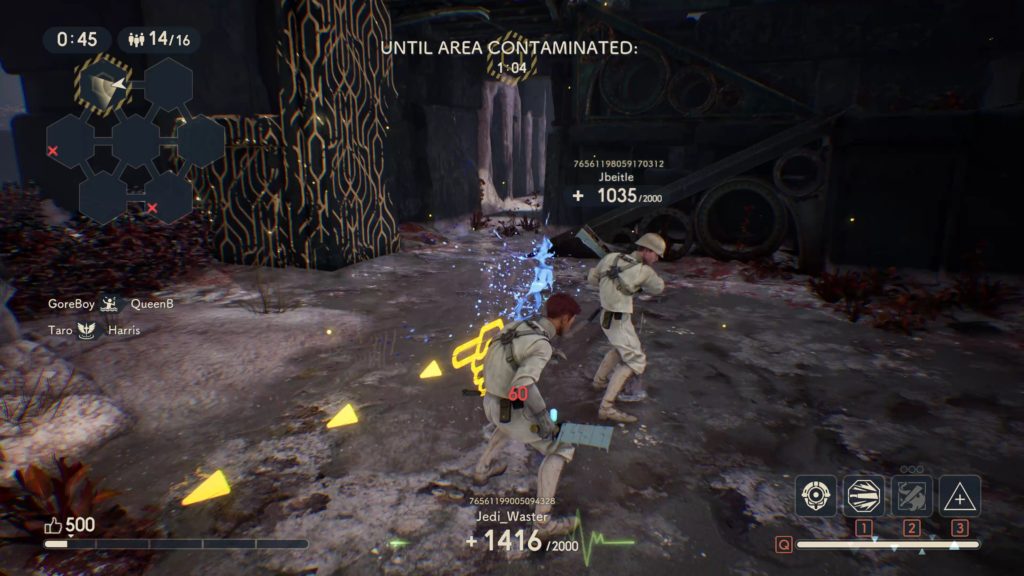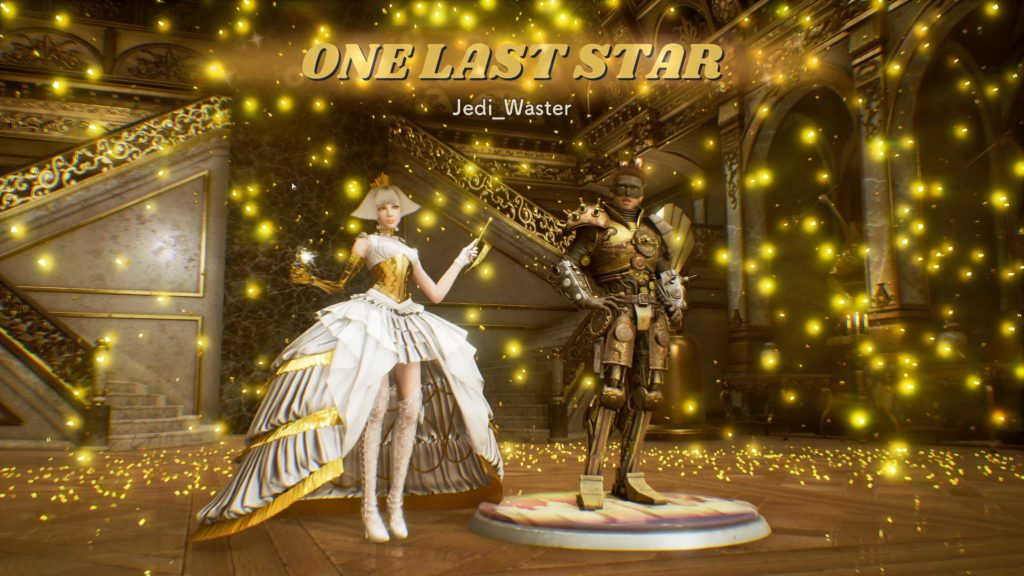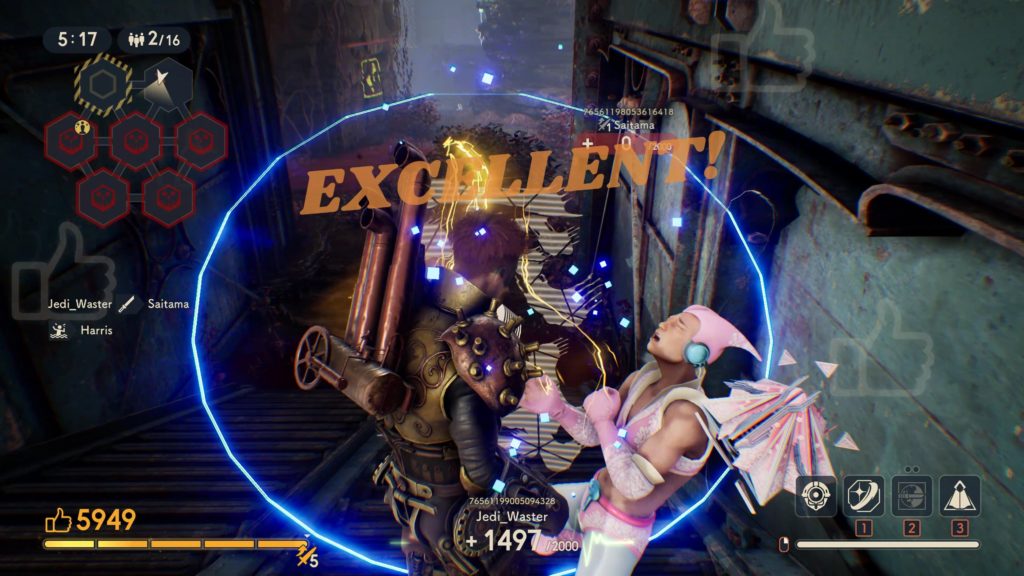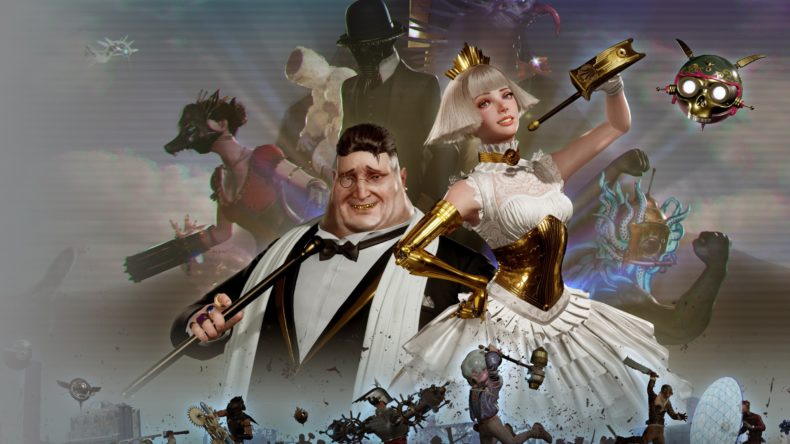Let it Die was a single-player action game from Suda51’s Grasshopper Manufacture. It was released in 2016 to a bit of a mixed reception, with many of its positives overshadowed by an unpopular monetisation model and a few niggling gameplay issues. Deathverse: Let it Die is the sort-of follow-up, canonically a direct sequel but a very different experience nonetheless.
I recently spent some time with a live multiplayer build of Deathverse, which is essentially a melee-based battle royale. Comparisons to the 7-year-old Let it Die are a little unfair, despite the fact that the two games share a universe. Almost a decade of microtransactions and battle royales have taught us a lot about what works and what doesn’t, and Deathverse is undoubtedly skewed the right way.

It centres on a TV show called Death Jamboree, the premier form of entertainment in a world several hundred years into Let it Die’s apocalypse. The show takes place on a mysterious series of islands rich in a compound called SPLithium, which is capable of creating deadly monsters and powering outlandish technology. It also enables the contestants of Death Jamboree to remain in a constant cycle of resurrection, competing to the death over and over for the amusement of the audience.
Battles take place in a grid-like arenas littered with power-ups such as collectable buffs and edible fungus. Battlegrounds are suspended above a red sea filled with deadly marine life that will kill anyone who takes a dip. The 16 players are dropped into random positions on the map, and are then funnelled towards the “Showdown Zone” by a fast-spreading contamination, until the final few survivors remain to duke it out for the coveted title of One Last Star.
Combat is primarily melee-based. Weapons such as machetes, katana, and massive hammers fill out the arsenal. Each weapon has a special attack tied to it, although you can also equip abilities in two separate slots on your character. Your HP is referred to as voltage, and is the energy that keeps you alive and kicking. Taking damage drains it, while dealing damage fills it up. It puts the onus on aggressive play, rewarding the most brutal players with greater survivability.

You each have an energy shield that can absorb a few shots, or be redirected into a limited ranged attack. Throughout each island arena you’ll find hostile lifeforms called Cryptids which will attack you, but which can be killed to increase your voltage. They can also be used to great effect against other players, to harry them and provide you a chance to deal some free damage or make an escape.
More deadly, though, are the Hunters. Codenamed Q, D, and M, these powerful NPCs will be on a weekly rotation after launch (with more expected to be added down the line). The Hunters add an even greater element of danger. Q is a melee-fighter who stalks the map and will likely kill any player she finds; D takes the form of an old-fashioned Game Hunter, and will come after you with a powerful rifle and illusions to confuse you.
Finally, Hunter M is an alien beast with buns of steel and a devastating melee attack. Succeed in taking him down, and you will become him for a limited time, earning increased damage and voltage for the duration. These Hunters create a more dynamic battlefield. Players are already forced to move and fight to survive against each other and contamination, but the Hunters are something else altogether.

There will be a “Jamboree Pass” available at launch, which contains cosmetics like weapons and character skins, projections for your energy shield, and emotes. Developer Supertrick Games is being careful to avoid the pay-to-win pitfalls of Let it Die, and you’ll be able to craft many of the weapons and even some cosmetic items with materials scavenged in the arenas.
The four maps we saw set the stage for competetive multiplayer, exhibition, and private “room” matches, and featured multiple levels, routes, vantage points and bushes to hide in. While I didn’t get to try anywhere near all the skills and abilities, I saw players disguised as shrubbery, or carrying out stylish executions on opponents reduced to just 1 voltage.
Where Let it Die attracted ire for a lack of variety, Deathverse is certainly aiming to avoid the same issue. I saw dozens of weapons and character skins, emotes, and decorations for your private quarters. Levelling up your character and weapons yields more skills and survivability, allowing for varying tactics and strategies – though I saw little that could offer a compelling argument against a massive sledgehammer to the face.
Aiding you is your very own little robot companion similar to Destiny’s Ghost, called Wilson. It offers support in the field, allowing you to scan the environment for other players, power-ups and Hunters. You can, of course, customise Wilson with a huge variety of skins, too.
With some time to go until the full release, Deathverse: Let it Die is shaping up to be a colourful, likeable multiplayer game that just happens to be set in a brutal, unforgiving future dystopia. It’s effortlessly funny, knowingly camp, varied enough to pull people in and accessible enough to keep them. Although there will undoubtedly be more to see after launch, what I’ve played so far has my attention fully trained on Supertrick Games.
Deathverse: Let it Die is coming to PlayStation on September 28th, and PC on October 5th.





